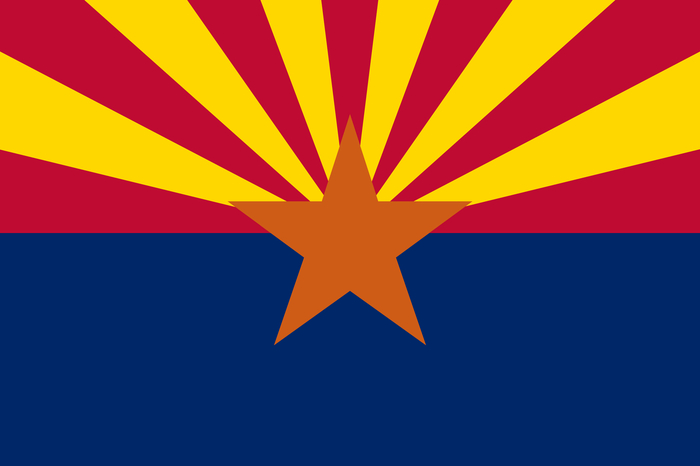Work Comp Third-Party Settlement Not Subject to Aitken Reduction
 In Arizona, a workers’ compensation carrier’s statutory lien under § 23–1023 is subject to being reduced if an employer is found to be negligent by a jury. In Aitken v. Indus. Comm’n of Ariz., 904 P.2d 456 (Ariz. 1995), cert. denied, 517 U.S. 1208, the Arizona Supreme Court concluded that the appropriate interpretation of the above lien statute required achieving “a reasonable balance between the rights of employer and employee, consistent with the underlying goals of the compensation scheme.” That was legal mumbo-jumbo for—a carrier could assert a lien on a third-party recovery only to the extent that the compensation benefits paid exceed the employer’s proportionate share of the total damages fixed by verdict in the action.
In Arizona, a workers’ compensation carrier’s statutory lien under § 23–1023 is subject to being reduced if an employer is found to be negligent by a jury. In Aitken v. Indus. Comm’n of Ariz., 904 P.2d 456 (Ariz. 1995), cert. denied, 517 U.S. 1208, the Arizona Supreme Court concluded that the appropriate interpretation of the above lien statute required achieving “a reasonable balance between the rights of employer and employee, consistent with the underlying goals of the compensation scheme.” That was legal mumbo-jumbo for—a carrier could assert a lien on a third-party recovery only to the extent that the compensation benefits paid exceed the employer’s proportionate share of the total damages fixed by verdict in the action.
Known as the “Rule of Equitable Apportionment,” following Aitken, a 25% finding of negligence on the employer by a jury results in a 25% reduction of the carrier’s lien. This came about with the abrogation of joint and several liability and the corresponding ability of a third-party tortfeasor to name an employer as a non-party at fault. Ever since, employer negligence has reduced the carrier’s lien proportionately. Or, so we thought.
One year after Aitken, the Arizona Supreme Court reversed a scheme devised by a plaintiff and a trial court by which a “summary trial” was held after a settlement, in which the employer, not surprisingly, was held to be 100% at fault. Grijalva v. Arizona State Comp. Fund, 912 P.2d 1303 (Ariz. 1996). Its lien was erased. The legal conspiracy completely exonerated the defendants who had just paid significant sums in settlement, but the court held that such an equitable reduction did not apply to settlements.
Four years later the issue reared its head again, in Stout v. State Compensation Fund, 3 P.3d 1158 (Ariz. App. 2000), but the Court of Appeals in that case again confirmed that the equitable reduction procedure did not apply when there was a settlement.
For years, an Aitken reduction was not required where the third-party action was resolved by settlement. Dietz v. General Elec. Co., 821 P.2d 166 (Ariz. 1991); see also A.R.S. § 12-2506(B) (1991) (joint and several liability). However, in 2017, a rogue Arizona Court of Appeals announced in Twin City Fire Insurance Company v. Leija, 403 P.3d 587 (Ariz. App. 2017), that when an employee settles a third-party case for less than the limits of third-party liability insurance, the employee may seek a ruling by the court that the carrier’s lien should be reduced to account for the employer’s comparative fault.
That ruling was short-lived, however. On August 2, 2018, the Arizona Supreme Court overruled the Court of Appeals with regard to settlement situations. Twin City Fire Ins. Co. v. Leija, 403 P.3d 587 (Ariz. App. 1st Div. 2017), as amended (Nov. 8, 2017), rev. granted (Mar. 20, 2018), opinion aff’d in part, vacated in part, CV-17-0280-PR, 2018 WL 3651026 (Ariz. Aug. 2, 2018). It held that employees who settle all their third-party claims “should not be granted post-settlement trials to determine the percentage of employer fault,” and insurance carriers should not be forced “to reduce their liens accordingly.” It announced that neither Aitken nor Grijaiva authorize a post-settlement trial process, and that the equitable apportionment of a lien based on employer fault is now only applicable where an employee’s total damages are “fixed by verdict” in a third-party trial. No longer is an employee able to settle without notice to the workers’ compensation carrier and quickly seek a court determination of the employer’s percentage of fault. Score one for the good guys.
If you have any questions regarding this article or subrogation in general, please contact Gary Wickert at gwickert@mwl-law.com.






